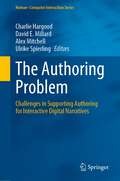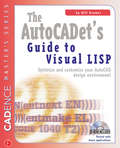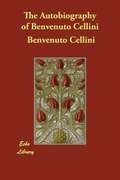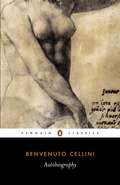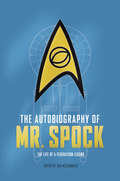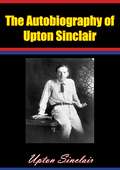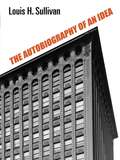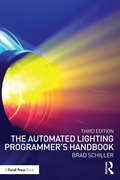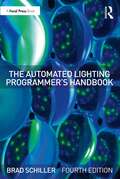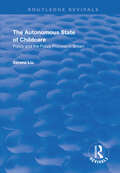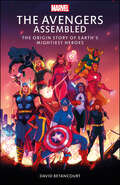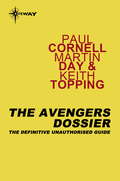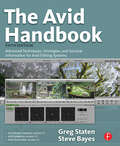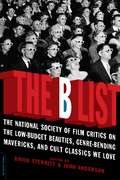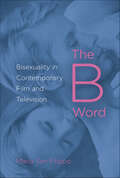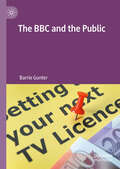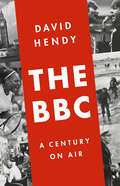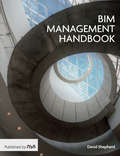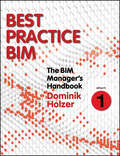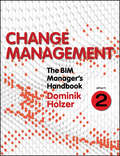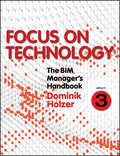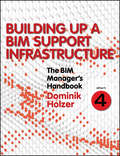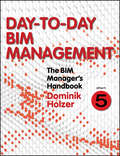- Table View
- List View
The Authoring Problem: Challenges in Supporting Authoring for Interactive Digital Narratives (Human–Computer Interaction Series)
by Alex Mitchell David E. Millard Charlie Hargood Ulrike SpierlingAuthoring, its tools, processes, and design challenges are key issues for the Interactive Digital Narrative (IDN) research community. The complexity of IDN authoring, often involving stories co-created by procedures and user interaction, creates confusion for tool developers and raises barriers for new authors.This book examines these issues from both the tool designer and the author’s perspective, discusses the poetics of IDN and how that can be used to design authoring tools, explores diverse forms of IDN and their demands, and investigates the challenges around conducting research on IDN authoring.To address these challenges, the chapter authors incorporate a range of interdisciplinary perspectives on ‘The Authoring Problem’ in IDN. While existing texts provide ‘how-to’ guidance for authors, this book is a primer for research and practice-based investigations into the authoring problem, collecting the latest thoughts about this area from key researchers and practitioners.
The AutoCADET's Guide to Visual LISP (Cadence Masters Ser.)
by Bill KramerAutoCADet: A person who uses AutoCAD directly or indirectly to create or analyze graphic images and is in possession of one or more of the following traits: wants to learn; has an interest in improving the way AutoCAD works; is a visionary AutoCAD user; i
The Autobiography Of Benvenuto Cellini
by Benvenuto CelliniFirst published in 1910, this edition of Benvenuto Cellini's autobiography includes an introduction and notes.
The Autobiography of Benvenuto Cellini
by Benvenuto CelliniBenvenuto Cellini was a celebrated Renaissance sculptor and goldsmith - a passionate craftsman who was admired and resented by the most powerful political and artistic personalities in sixteenth-century Florence, Rome and Paris. He was also a murderer and a braggart, a shameless adventurer who at different times experienced both papal persecution and imprisonment, and the adulation of the royal court. Inn-keepers and prostitutes, kings and cardinals, artists and soldiers rub shoulders in the pages of his notorious autobiography: a vivid portrait of the manners and morals of both the rulers of the day and of their subjects. Written with supreme powers of invective and an irrepressible sense of humour, this is an unrivalled glimpse into the palaces and prisons of the Italy of Michelangelo and the Medici.
The Autobiography of Mr. Spock
by Una MccormackThe iconic Star Trek character&’s lifestory appears for the first time in his own words; perfect for fans of the upcoming Star Trek: Strange New Words. One of Starfleet&’s finest officers and the Federation&’s most celebrated citizens reveals his life story. Mr Spock explores his difficult childhood on Vulcan with Michael Burnham, his controversial enrolment at Starfleet Academy, his time on the Enterprise with both Kirk and Pike, and his moves to his diplomatic and ambassadorial roles, including his clandestine mission to Romulus. Brand-new details of his life on Vulcan and the Enterprise are revealed, along with never-before-seen insights into Spock&’s relationships with the most important figures in his life, including Sarek, Michael Burnham, Christopher Pike, Kirk, McCoy and more, all told in his own distinctive voice.
The Autobiography of Upton Sinclair
by Upton SinclairFirst published in 1962, on the suggestion of his readers throughout his expansive writing career, this is the self-penned biography of Upton Sinclair, author of hundreds of novels, plays, homilies, diatribes and pamphlets.Written at the age 83, Sinclair at last allows his loyal readership to glean an in-depth look at the man who discovered the Jungle in Armours Meat Industry at 28, founded a Utopian co-operative in 1908, and who muckraked through all of America "to become the finest and most devoted polemicist this country has seen"--from his childhood beginnings in Maryland to his youth in New York through to publication of his first novels and political career and beyond.Of his work, Upton Sinclair says: "The English Queen Mary, who failed to hold the French port of Calais, said that when she died, the word 'Calais' would be found written on her heart. I don't know whether anyone will care to examine my heart, but if they do they will find two words there--'Social Justice.' For that is what I have believed in and fought for during sixty-three of my eighty-four books."His is an intellectual's book dealing with one who made intellectual history, and no self-respecting intellectual tradesman will fail to read it."--Kirkus ReviewIllustrated with 17 black-and-white photographs.
The Autobiography of an Idea (Dover Architecture)
by Louis H. SullivanThe famous American architect's fascinating look at the early years of his pioneering work, which led to his being called the "father of the skyscraper." Far from an ordinary document of records and dates, Sullivan's passionate book crystallizes his insights and opinions into an organic theory of architecture. Includes a wealth of projects and evaluations, as well as 34 full-page plates.
The Automated Lighting Programmer's Handbook
by Brad SchillerThis guide helps lighting designers with the creative and operational challenges they face in their rapidly evolving industry. Providing respected and clear coverage of the process of programming automated lighting fixtures, the author brings the designer from basic principles to preproduction preparations. Concepts, procedures, and guidelines to ensure a successful production are covered as well as troubleshooting, much needed information on work relationships, and technology including LED lighting, console networking, digital lighting, and more. Chapters are peppered with advice and war stories from some of the most prominent lighting designers of today.
The Automated Lighting Programmer's Handbook
by Brad SchillerThe Automated Lighting Programmer’s Handbook, fourth edition, provides respected and clear coverage of the process of programming automated lighting fixtures from basic principles to advanced production preparations. This guide helps lighting programmers and designers with the creative and operational challenges they face in their rapidly evolving industry. Concepts, procedures, and guidelines to ensure a successful production are covered as well as troubleshooting, much needed information on workflows, technology, work relationships, console networking, digital lighting, and more. Chapters are peppered with advice and war stories from some of the most prominent lighting designers and programmers of today. The fourth edition is the most comprehensive yet: added topics include programming structure, advanced recording/editing, cloning, multi-cell fixtures, safety routines, GDTF, and pre-visualization. Deep explorations into the work of programmers from Earlybird and Broadway provide readers with timely real-world scenarios and advice. The information in this book is perfect for anyone interested in the programming of automated lighting in any market. From the beginner to the expert, the methodologies within provide simple, yet powerful tools to assist with any production. Lighting designers also will gain important knowledge about the procedures and concepts utilized by lighting programmers.
The Autonomous State of Childcare: Policy and the Policy Process in Britain (Routledge Revivals)
by Serena LiuThis title was first published in 2001. Public childcare provision in Britain is an issue that raises much passion and has been the source of much disappointment. Free childcare in Britain is limited. Public policy has been slow to change in terms of providing more childcare. Insufficient public childcare provision is a barrier to acheiving equal rights for women, especially within the employment sector. This book sets out to search for the factors crucial to constraining the development of childcare policy and public childcare provision. It looks at schemes that have been set up but that ultimately fail in allowing women to work by not providing the necessary childcare provision. The book looks at the issue of childcare provision, how the policy process works, the different types of childcare provision past and present, and implementation and operation of childcare schemes.
The Autopoiesis of Architecture
by Patrik SchumacherTake a theoretical approach to architecture with The Autopoiesis of Architecture, which presents the topic as a discipline with its own unique logic. Architecture's conception of itself is addressed as well as its development within wider contemporary society.Author Patrik Schumacher offers innovative treatment that enriches architectural theory with a coordinated arsenal of concepts facilitating both detailed analysis and insightful comparisons with other domains, such as art, science and politics. He explores how the various modes of communication comprising architecture depend upon each other, combine, and form a unique subsystem of society that co-evolves with other important autopoietic subsystems like art, science, politics and the economy.The first of two volumes that together present a comprehensive account of architecture's autopoiesis, this book elaborates the theory of architecture?s autopoeisis in 8 parts, 50 sections and 200 chapters. Each of the 50 sections poses a thesis drawing a central message from the insights articulated within the respective section. The 200 chapters are gathering and sorting the accumulated intelligence of the discipline according to the new conceptual framework adopted, in order to catalyze and elaborate the new formulations and insights that are then encapsulated in the theses. However, while the theoretical work in the text of the chapters relies on the rigorous build up of a new theoretical language, the theses are written in ordinary language ? with the theoretical concepts placed in brackets. The full list of the 50 theses affords a convenient summary printed as appendix at the end of the book.The second volume completes the analysis of the discourse and further proposes a new agenda for contemporary architecture in response to the challenges and opportunities that confront architectural design within the context of current societal and technological developments.
The Autopoiesis of Architecture, Volume II: A New Agenda for Architecture
by Patrik SchumacherThis is the second part of a major theoretical work by Patrik Schumacher, which outlines how the discipline of architecture should be understood as its own distinct system of communication. Autopoeisis comes from the Greek and means literally self-production; it was first adopted in biology in the 1970s to describe the essential characteristics of life as a circular self-organizing system and has since been transposed into a theory of social systems. This new approach offers architecture an arsenal of general comparative concepts. It allows architecture to be understood as a distinct discipline, which can be analyzed in elaborate detail while at the same time offering insightful comparisons with other subject areas, such as art, science and political discourse. On the basis of such comparisons the book insists on the necessity of disciplinary autonomy and argues for a sharp demarcation of design from both art and engineering. Schumacher accordingly argues controversially that design as a discipline has its own sui generis intelligence – with its own internal logic, reach and limitations. Whereas the first volume provides the theoretical groundwork for Schumacher’s ideas – focusing on architecture as an autopoeitic system, with its own theory, history, medium and its unique societal function – the second volume addresses the specific, contemporary challenges and tasks that architecture faces. It formulates these tasks, looking specifically at how architecture is seeking to organize and articulate the complexity of post-fordist network society. The volume explicitly addresses how current architecture can upgrade its design methodology in the face of an increasingly demanding task environment, characterized by both complexity and novelty. Architecture’s specific role within contemporary society is explained and its relationship to politics is clarified. Finally, the new, global style of Parametricism is introduced and theoretically grounded.
The Avengers Assembled: The Origin Story of Earth’s Mightiest Heroes
by David BetancourtA new, in-depth, biographical take on the greatest Superhero team of all timeEver wondered who the Avengers really are…?Take a deep dive into the fascinating history of Earth's Mightiest Heroes. From their earth-shattering formation and cataclysmic lineup changes to the introduction of fan-favorite characters like the Vision and Black Widow, this unique volume provides a comprehensive look at the origin and evolution of Marvel's premiere Super Hero team.This meticulously researched biography reveals unparalleled insights into the characters, backstories and motivations of Iron Man, Captain America, Ant-Man, Wasp, Thor, Hulk, Scarlet Witch, Black Widow, Black Panther, and more. The Avengers&’ story has been told many times – but never like this…© 2023 MARVEL
The Avengers Dossier
by Paul Cornell Keith Topping Martin DayMore than any other series, THE AVENGERS typified the Swinging Sixties - beginning in 1961 with Patrick Macnee starring with Ian Hendry in a grainy, realistic spy thriller, and ending in 1969 with Macnee and the glamorous Linda Thorson blasting off into space in a surreal episode appropriately entitled 'Bizarre'. Meanwhile we had seen the memorable Honor Blackman and Diana Rigg in roles unusually progressive for British television.THE NEW AVENGERS in the mid-seventies reflected changing times but retained the essence of the show - as Macnee returned to play alongside another strong, independent heroine in the form of Joanna Lumley's Purdey. And then there was the film...THE AVENGERS DOSSIER is a uniquely comprehensive yet humorous survey of all the show's incarnations. As well as a remarkably detailed episode guide to both series - even covering the kinkiness factor and champagne count in both - this volume gives behind the scenes insights and revelations about every aspect of the programme. The film and its production are examined, and critical essays look at the history behind the cult.
The Avid Handbook: Advanced Techniques, Strategies, and Survival Information for Avid Editing Systems
by Greg Staten Steve BayesBrimming with workflow efficiencies for the experienced editor, The Avid Handbook teaches you the hows and whys of operating the system in order to reach streamlined, creative end solutions. The book emphasizes time-saving techniques, shortcuts, and workflow procedures- the true keys to getting a job done.The book has also been updated to include new information on HD formats and workflows, color-correction and grading capability enhancements, MXF media standardization, and much more.Also new to this edition are an 8 page 4-color insert, adding depth to the color-correction lessons, as well as running sidebars throughout the book, calling out time-saving tips and techniques.
The B List: The National Society of Film Critics on the Low-Budget Beauties, Genre-Bending Mavericks, and Cult Classics We Love
by John Anderson David SterrittThe choicest noir, neo-noir, science fiction, horror, westerns, midnight movies, and more?from critics like David Ansen, Jami Bernard, Roger Ebert, Carrie Rickey, Richard Schickel, and Kenneth Turan.
The B Word: Bisexuality in Contemporary Film and Television
by Maria San FilippoOften disguised in public discourse by terms like "gay," "homoerotic," "homosocial," or "queer," bisexuality is strangely absent from queer studies and virtually untreated in film and media criticism. Maria San Filippo aims to explore the central role bisexuality plays in contemporary screen culture, establishing its importance in representation, marketing, and spectatorship. By examining a variety of media genres including art cinema, sexploitation cinema and vampire films, "bromances," and series television, San Filippo discovers "missed moments" where bisexual readings of these texts reveal a more malleable notion of subjectivity and eroticism. San Filippo's work moves beyond the subject of heteronormativity and responds to "compulsory monosexuality," where it's not necessarily a couple's gender that is at issue, but rather that an individual chooses one or the other. The B Word transcends dominant relational formation (gay, straight, or otherwise) and brings a discursive voice to the field of queer and film studies.
The BBC and the Public
by Barrie GunterThis book examines the relationship between the public and the BBC in terms of public use of the BBC and their attitudes towards it. These audience research measures are being used as metrics to assess the value of the BBC to the UK public. Some of the attitudinal measures address perceptions of the BBC’s outputs and some examine public views about the way the BBC is funded and managed. The book has been written at a time when the BBC reached its centenary and also the mid-point of its latest Royal Charter period. At the time of writing, the government had begun a mid-term review of its performance as judged by its attainment of objectives set out in that Charter. The Secretary of State for Digital, Culture, Media and Sport at the time of the mid-term review had spoken and written openly about abolishing the TV licence fee and the introduction of a new funding model for the BBC that would be implemented in its new Royal Charter due to be enacted in 2027. Against this backdrop, this book examines public opinion about the funding of the BBC and then looks at changing media consumption habits and how these have affected patronage of the BBC’s outputs. “Ultimately, a decision must be taken about the kind of national broadcaster the UK – both is government and its citizens – would like to keep in the future. Changing the funding model without first defining what the BBC should do and how it should be structured and resourced to do it could result in a messy solution that satisfies and benefits no one.”
The BBC: A Century on Air
by David HendyThe first in-depth history of the iconic radio and TV network that has shaped our past and present.Doctor Who; tennis from Wimbledon; the Beatles and the Stones; the coronation of Queen Elizabeth and the funeral of Diana, Princess of Wales: for one hundred years, the British Broadcasting Corporation has been the preeminent broadcaster in the UK and around the world, a constant source of information, comfort, and entertainment through both war and peace, feast and famine.The BBC has broadcast to over two hundred countries and in more than forty languages. Its history is a broad cultural panorama of the twentieth century itself, often, although not always, delivered in a mellifluous Oxford accent. With special access to the BBC&’s archives, historian David Hendy presents a dazzling portrait of a unique institution whose cultural influence is greater than any other media organization. Mixing politics, espionage, the arts, social change, and everyday life, The BBC is a vivid social history of the organization that has provided both background commentary and screen-grabbing headlines—woven so deeply into the culture and politics of the past century that almost none of us has been left untouched by it.
The BIM Management Handbook
by David ShepherdAn authoritative and practical road map for those implementing and managing BIM workflows. With the 2016 deadline for BIM level 2 fast approaching and the growing realisation of the huge benefits BIM brings these skills are becoming industry essentials. Concentrating on the how rather than the why this will help you to adapt by clearly, and without jargon, explaining standard BIM processes, Government standards and the effective coordination of design, construction and asset information. Spanning both organisational strategy and day-to-day practical tasks it explores bottom line business reasoning as well as potential risks and challenges. This is the go-to guide for BIM Coordinators and Managers, architectural principals, design team leaders and architectural technicians ensuring you are ‘BIM ready’ in 2016. It will also be invaluable for Part 3 students getting to grips with BIM strategy and implementation.
The BIM Manager's Handbook, Part 1: Best Practice BIM
by Dominik HolzerePart 1 Best Practice BIM: Seeking to get BIM right? This ePart provides a touchstone for good practice by introducing a number of Key Performance Indicators (KPIs), which represent benchmarks for successful BIM implementation. It explains what good BIM looks like and the pitfalls to avoid with ‘bad BIM’ and ‘pseudo BIM’. It highlights the part that the BIM Manager can play in achieving excellence by outlining the various responsibilities the BIM Manager’s role encompasses, while also emphasising how these responsibilities have changed over time and how they are set to evolve. By drawing on interviews with the top BIM Managers worldwide, it delivers up-to-date expert insights from the field. Obook ISBN: 9781118987780; ePub ISBN: 9781118987858; ePDF ISBN: 9781118985618; published April 2015
The BIM Manager's Handbook, Part 2: Change Management
by Dominik HolzerePart 2 Change Management: A BIM Manager might be hired for their technical skills, but their success relies heavily on their ability to be an agent of change within their organisation, facilitating transition to BIM processes and mentoring staff through the cultural and procedural shifts. This ePart outlines strategies to manage an organisation’s transition to BIM successfully and to master supporting its continuous evolution. Based on accounts from top practitioners, it highlights how the BIM manager might approach interfacing with their organisation’s leadership by successfully lobbying and leading on BIM from the inside, while overcoming change-resistance and managing teams’ expectations. It concludes with a ‘Tips and Tricks’ section that provides in-depth advice for running BIM audits and for setting up in-house BIM workshops, which are instrumental for any BIM Manager seeking a better understanding of their organisational context and to raise the level of awareness of the BIM knowledge of key decision-makers. Obook ISBN: 9781119092308; ePub ISBN: 9781118987797; ePDF ISBN: 9781119092292; published April 2015
The BIM Manager's Handbook, Part 3: Focus on Technology
by Dominik HolzerePart 3: Focus on Technology: How do you ensure your organisation gets the most out of the BIM technology available? Dedicated to the main technology-related aspects of a BIM Manager’s role, this ePart explains how to establish and manage an organisation’s BIM-related tool-ecology and how to use BIM in order to link from design to fabrication. What do BIM Managers need to do in order ensure their teams use the right tools for the various tasks in design, construction and beyond? How do they connect them and how do they keep up with updates in this rapidly changing environment. This ePart highlights the challenges BIM Managers need to overcome in software, hardware and network selection. It also brings into focus the opportunities BIM Managers face in the changing context of BIM in the Cloud. Extending beyond technical know-how, it also offers advice on how to create a successful interface between the BIM Manager and the IT specialist(s). Obook ISBN: 9781118987803; ePub ISBN: 9781118987773; ePDF ISBN:9781118987766; published August 2015
The BIM Manager's Handbook, Part 4: Building Up a BIM Support Infrastructure
by Dominik HolzerePart 4: Building up a BIM Support Infrastructure: Addressing the ‘back of house’ aspect of BIM Management, this ePart outlines how to go about developing a range of in-house BIM standards and guidelines. It highlights how BIM Managers go about establishing a training programme for staff and the setting up and management of an organisation’s BIM content library. It covers the support needed to move BIM information into the field and further into facilities and asset management. It emphasises the importance of internal messaging, and articulating how to nurture a culture of peer-to peer support and advancement of skills by individual staff members. Looking beyond a single firm’s or organisation’s requirements, the ePart positions BIM support infrastructure in the wider context of key global BIM policies and guidelines. Obook ISBN: 9781118987896; ePub ISBN: 9781118987919; ePDF ISBN:9781118987834; published August 2015
The BIM Manager's Handbook, Part 5: Day-to-Day BIM Management
by Dominik HolzerePart 5: Day-to-Day BIM Management: How do you go about mastering hands-on support BIM for your team? ePart 5 introduces the operational tasks a BIM Manager is expected to accomplish. Depending on an organisation’s size BIM Managers either supervise the rollout of BIM on various projects, or they actively get involved in mentoring those authoring or coordinating information in BIM. By providing a strong project focus, this ePart, firstly, addresses requirements for in-house BIM project support; secondly, it explains how to support the integration and coordination of BIM data across a multi-disciplinary project team. Leading BIM experts from the US, UK and Australia divulge their recipes for successful operational management. Obook ISBN: 9781118987902; ePub ISBN:9781118987919; ePDF ISBN: 9781118987926; published November 2015
